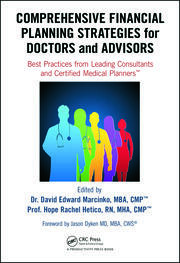The State of MEDICAL TOURSIM in the USA
By Dr. David Edward Marcinko MBA CMP®

SPONSORED: www.CertifiedMedicalPlanner.org
American businesses are extending their cost-cutting initiatives to include offshore employee medical benefits, and facilities like the Bumrungrad Hospital in Bangkok, Thailand (cosmetic surgery), the Apollo Hospital in New Delhi, India (cardiac and orthopedic surgery) are premier examples for surgical care. Both are internationally recognized institutions that resemble five-star hotels equipped with the latest medical technology.

Foreign countries where I studied medicine and surgery, and practiced briefly, such as Finland, England, Canada and Germany are also catering to the English-speaking crowd, while dentistry is especially popular in Mexico and Costa Rica. Although this is still considered “medical tourism,” Mercer Health and Benefits was retained a decade ago by three Fortune 500 companies interested in contracting with offshore hospitals and The Joint Commission [TJC] has accredited 88 foreign hospitals through a joint international commission.
To be sure, when India can discount costs up to 80%, the effects on domestic hospital reimbursement and physician compensation may be assumed to increase downward compensation pressures.
So far, so good; right? Thumbs Up!
But, then came the Corona Virus Pandemic!

Johns Hopkins University Covid 19 Tracker: https://coronavirus.jhu.edu/map.html
India Today: https://www.indiatoday.in/coronavirus
INDIA RATIONING: https://www.msn.com/en-us/health/medical/who-to-be-saved-who-not-to-be-inside-a-hospital-during-indias-covid-19-crisis/ar-BB1golnK?li=BBnb7Kz
ASSESSMENT: Your thoughts are now appreciated.

SECOND OPINIONS: https://medicalexecutivepost.com/schedule-a-consultation/
INVITE DR. MARCINKO: https://medicalexecutivepost.com/dr-david-marcinkos-bookings/
THANK YOU
***
Filed under: "Doctors Only", Health Economics, Health Insurance, Healthcare Finance, iMBA, Inc., Touring with Marcinko | Tagged: corona virus, David Edward Marcinko, global healthcare business models, medical tourism | 1 Comment »






















